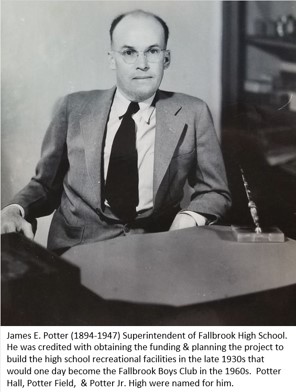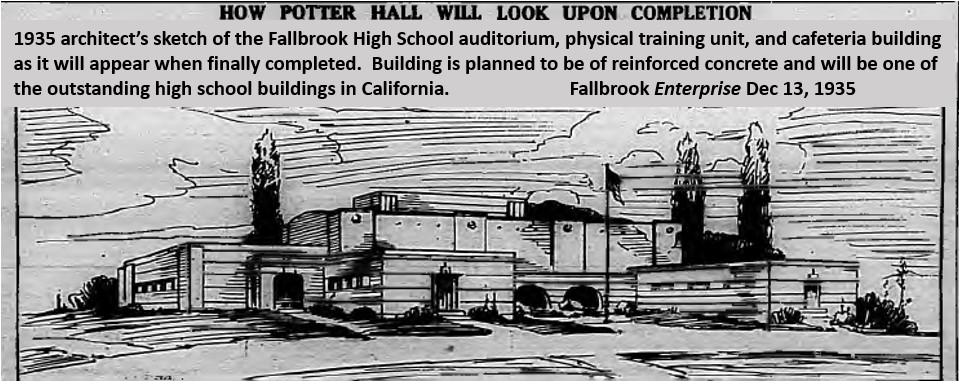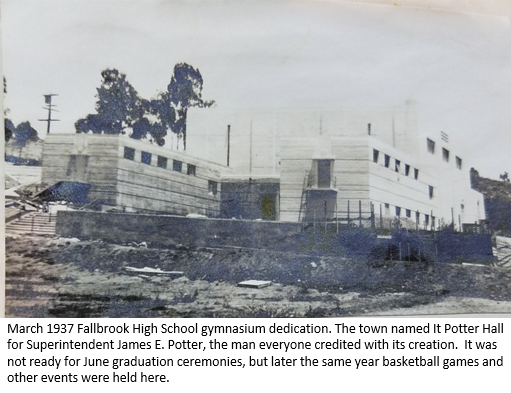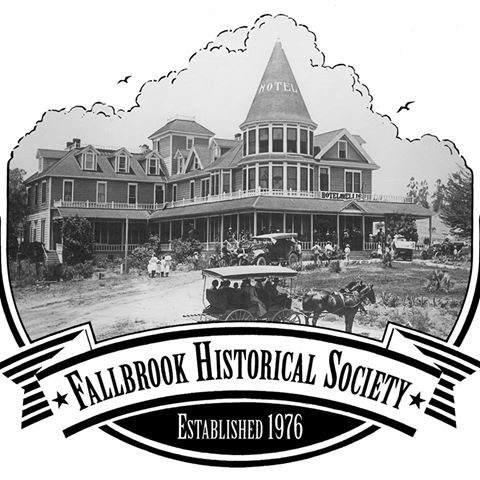Originally known as the Fallbrook Boys Club, the organization first opened its doors to the public on July 1st 1963. The Fallbrook Historical Society has combed through newspaper accounts and other records to help piece together the timeline of the founding of the Boys Club.

The history of the Boys & Girls Club begins with Fallbrook High School. In September 1914, Fallbrook High School had moved from Elder Street into their new classrooms at the corner of Iowa and Ivy Streets. The school’s athletic field was across Ivy Street. In the late 1930s, high school superintendent James Potter worked ceaselessly to obtain the funding to design and construct modern athletic facilities for the students; including a gymnasium, cafeteria, improved ball fields, and a swimming pool.[1]
In 1957, because of the increasing student population, the high school was compelled to move again to a larger campus on Stagecoach Lane, where it is today. The new junior high school initially occupied the old high school classrooms on Iowa St. until their own classrooms could be completed on Reche Rd in 1962.


The high school basketball team continued to hold their games in Potter Hall until their new gymnasium could be built on Stagecoach Lane. Both the junior high and the high school continued to use the athletic facilities on Ivy St.
In March 1962, with Potter Junior High fully settled on Reche Road, and the high school complete on Stagecoach Lane, the school district proposed selling the 9.28 acre tract that contained Potter Hall and Potter Field. The asking price was $65,000.[2]
The Fallbrook Woman’s Club held public forums on what to do with the Potter Property. There were multiple suggestions such as constructing housing, or a shopping center, and several other commercial ideas. Private ownership of the property was quickly ruled out, because public funds had been used to build the high school facilities.[3] The idea of using the ready-made recreational facilities for a Fallbrook Boys Club was a popular proposal with the community. However, raising $65,000 for an organization that did not yet exist was a significant barrier.
Fortunately, the Fallbrook Fire District had an actual need for a portion of this property. The Fire District had the money and they were willing to help the Boys Club cause. As a public agency, the Fire District had the first option to buy the school property. After much discussion, rhe Fire District purchased the whole property outright and then offered to re-sell Potter Hall to the Boys Club for $30,000 if the Boys Club could raise the money within a given deadline.[4]
It was originally just called the Boys Club in the early 1960s. The earliest mention of involving girls came from the First Baptist Church of Fallbrook. The Baptist Church, eager to provide youth recreation in Fallbrook, proposed the same terms as the Boys Club. It was pointed out by Fire Chief Thurber that the only difference between the Boys Club and the Baptists’ offer was that the Church would allow girls to be let in also. “The fire commissioners laughed at this.”[5] The Baptists did not have ready funds either and the fire commissioners voted to stick with the Boys Club.
The non-profit Boys Club of Fallbrook was incorporated on August 10, 1962, creating the entity to raise the money for the property purchase and first year of operation. The Fallbrook Chamber of Commerce allowed some office space to the new non- profit.[6]
One of the frequently cited reasons by organizers for a Fallbrook Boys Club was to “cut down on delinquency.”
Organizers promised that girls would not be forgotten and that partial use of the facilities for girl’s activities would be planned “as soon as other details are completed.”[7]
While the fundraising was underway, Fire Chief Bill Thurber discovered in February 1963, that some boys had broken into the old building and were playing basketball on the old high school court in something of an “unofficial” opening. Actually, the unsupervised boys’ vandalism had caused a lot of damage.[8]
The whole town participated in fund raising for the Boys Club until the goal was finally reached in April 1963.[9] The first Executive Director, Erik Larson, a 25-year-old SDSU graduate, was hired in May 1963.[10] Shortly afterwards the Boys Club of Fallbrook opened its doors to the public on July 1st 1963.[11]
After the transfer of the old high school property had been completed, the 9.28 acres had been divided intothree parcels;The Fire District kept about three acres, the Elementary School District took over four acres, with the remainder going to the Boys Club.[12]

In 1978 there were enough girls with active memberships that the community had taken to referring to the facility as the Boys & Girls Club of Fallbrook. After further expansion, incorporation papers with the State were eventually amended in 1998 to say DBA (Doing Business As) Boys & Girls Clubs of North County.
Tom Frew,
FHS Historian
- Fallbrook Enterprise December 6, 1935 & May 1, 1936. Potter Hall & C of C meeting
- Fallbrook Enterprise March 29, 1962 School Offers Terms for Potter Property.
- Fallbrook Enterprise November 29, 1962 Local Boys Club given 90 Days to Buy Potter Hall.
- ibid.
- Fallbrook Enterprise July 12, 1962 Church Covets Potter Property.
- Fallbrook Enterprise January 24, 1963 Boys Club Plans Opening of Office
- Fallbrook Enterprise February 7, 1963 A Fund Campaign with Promise.
- Fallbrook Enterprise February 28, 1963
- Fallbrook Enterprise April 11, 1963 Boys Club Fund Drive Goes Over the Top Here.
- Fallbrook Enterprise June 13, 1963 Local Boys Club Executive Director Arrives Here.
- Fallbrook Enterprise June 27, 1963 Club Opens to Boys on Monday (July 1st 1963)
- Fallbrook Enterprise June 11, 1970 Shouting Silenced Forever on Hilltop. A nostalgic story about the final closing of the last Elementary school classrooms on Iowa Street.
